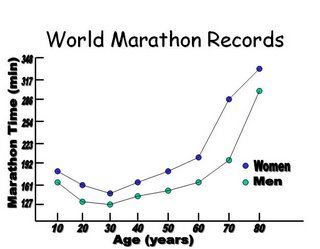Easy Means Easy
Sometimes the hardest part of training is going easy. I'm reminded of this from riding with two of my clients who were in town on Tuesday. Both they and I had recovery rides scheduled as we all had hard workouts planned for the following day. I could tell they were having a hard time 'going for a walk' on a bike. At one point I had to chase one of them down to get the effort low again. When we were done one of them told me he had never had such a low heart rate on a bike ride.
Since they are both now starting their Build period, their training must be either hard or easy - never in between. 'Hard,' of course, is related to the event for which one is training. It doesn't mean maximum effort all the time. 'Easy' means zone 1. If one makes the easy days easy, the hard days can be hard. And race fitness improves. If, on the other hand, easy becomes moderate then hard also becomes moderate. And there is little progress.
I learned this lesson from Gary Muhrcke, the winner of the first New York City Marathon in 1970. In 1982 Gary and I both owned running stores (I believe he stills owns his - Super Runner in NYC; I sold mine - Foot of the Rockies - in 1987). That year Tiger running shoes (now called ASICS) had a national sales promotion. The top-10, best-selling stores of their products would win a one-week, all-expenses-paid vacations for two to the Bahamas. Gary's and my store were winners. We met the first day and decided to run together every morning. The next day we met to run. After a few minutes we were running a much faster pace than I was ready for. I felt like I was in a race. I dreaded the next morning. But that day he took us out at such an easy pace that it was embarrassing. It must have been a 9-minute pace. Then the third morning it was a race again. And it went on like that the rest of the week. At the end of the week I was in much better shape, I could tell.
That's when I learned about hard-easy and I've been doing it ever since. It works. But most athletes don't give it a chance. When they feel their fitness is slipping the first decision they make is to increase the intensity of their easy days. It should be just the opposite - make the easy days easier. That will ensure you are ready to go for the next hard workout. Give it a try.


